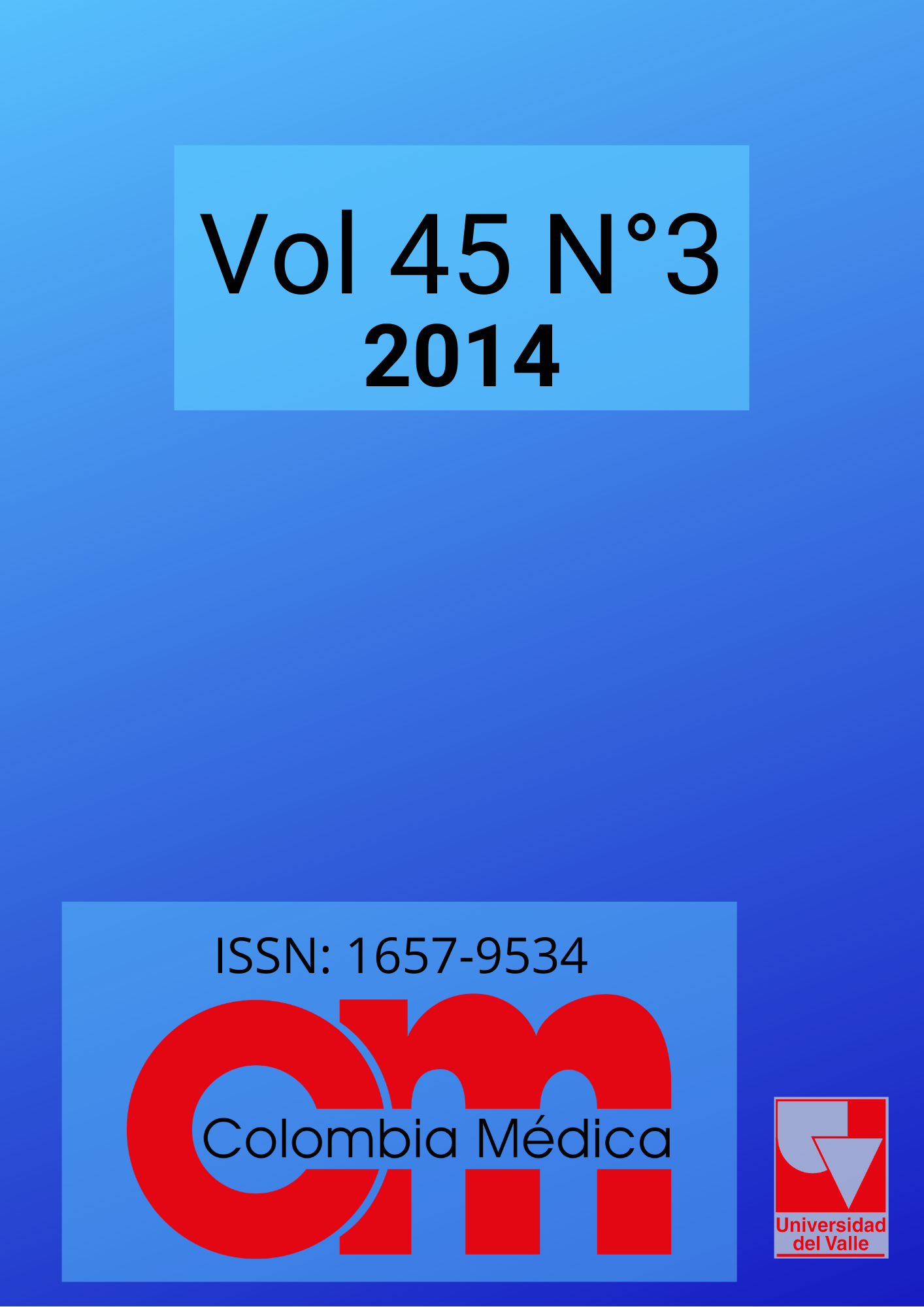Vaccine against human Papilloma Virus
Main Article Content
At present two prophylactic human papilloma virus (HPV) vaccines are commercially available. The Tetravalent vaccine against infection with four VPH types (6, 11, 16, and 18) distributed in the national program in Colombia and the Bivalent vaccine against the VPH types 16 and 18, respectively. The efficacy and safety of both vaccines has periodically been assessed and they have been declared efficacious and safe by the health authorities of several countries and the Global Advisory Committee on Vaccine Safety ( GACVS ) of the World’s Health Organization (WHO).In its report of March 2014 the GACVS analyzed the evidence of the relationship between the Human Papillomavirus Vaccine with >175 million of doses distributed worldwide and autoimmune diseases, particularly Multiple Sclerosis, Aluminum as adjuvant, Vasculitis caused by vaccine DNA fragments and the Complex Regional Pain Syndrome described in Japan. The Committee ratified the strict vaccine safety control and based on a thorough examination of existing evidence, reaffirmed that the risk-benefit profile remains favorable. The case of the children of Carmen de Bolivar in Colombia has been described by several authors in other countries as "Massive Psychogenic Event", which has absolute no relationship with the vaccine but its high media dissemination resulted into disastrous consequences for the national vaccination program
- VPH
- human papiloma virus
- vaccine
- massive psychogenic event
Muñoz N, Kjaer SK, Sigurdsson K, Iversen OE, Hernandez-Avila M, Wheeler CM, et al. Impact of human papillomavirus (HPV)-6/11/16/18 vaccine on all HPV-associated genital diseases in young women. J Natl Cancer Inst. 2010;102(5):325–339. DOI: https://doi.org/10.1016/S1040-1741(10)79504-X
Slade BA, Leidel L, Vellozzi C, Woo EJ, Hua W, Sutherland A, et al. Postlicensure safety surveillance for quadrivalent human Papillomavirus recombinant vaccine. JAMA. 2009;302:750–757. DOI: https://doi.org/10.1001/jama.2009.1201
Gee J, Naleway A, Shui I, Baggs J, Yin R, Li R, et al. Monitoring the safety of quadrivalent human papillomavirus vaccine: findings from the Vaccine Safety Datalink. Vaccine. 2011;29:8279–8284. DOI: https://doi.org/10.1016/j.vaccine.2011.08.106
Arnheim-Dahlström L, Pasternak B, Svaström H, Sparén P, Hviid A. Autoimmune, neurological, and venous thromboembolic adverse events after immunisation of adolescent girls with quadrivalent human papillomavirus vaccine in Denmark and Sweden: cohort study. BMJ. 2013;347:f5906–f5906. DOI: https://doi.org/10.1136/bmj.f5906
Grimaldi-Bensouda L, Guillemot D, Godeau B, Bénichou J, Lebrun-Frenay C, Papeix C, et al. Autoimmune disorders and quadrivalent human papillomavirus vaccination of young female subjects. J Intern Med. 2014;275(4):398–408. DOI: https://doi.org/10.1111/joim.12155
OMS [30 August 2014];Global Advisory Committee on Vacine Safety. 20140312 a Available from: http://www.who.int/vaccine safety/committee/topics/hpv.
Mitkus RJ, King DB, Hess MA, Forshee RA, Walderhaug MO. Updated Aluminum pharmacokinetics following infant exposures through diet and vaccines. Vaccine. 2011;29:9538–9543. DOI: https://doi.org/10.1016/j.vaccine.2011.09.124
Buttery JP, Madin S, Crawford NW, Elia S, La Vincente S, Hanieh S, et al. Mass psychogenic response to human papillomavirus vaccination. Med J Aust. 2008;189(5):261–262. DOI: https://doi.org/10.5694/j.1326-5377.2008.tb02018.x
Downloads
- Luis Eduardo Bravo, Nubia Muñoz, Epidemiology of cancer in Colombia , Colombia Medica: Vol. 49 No. 1 (2018): Colombia Cancer Epidemiology
- Nubia Muñoz, COVID-19 in Latin America: a first glance to the mortality , Colombia Medica: Vol. 51 No. 2 (2020): Coronavirus disease 2019
- Nubia Muñoz, Luis Eduardo Bravo, Epidemiology of cervical cancer in Colombia , Colombia Medica: Vol. 43 No. 4 (2012): Numbers in cancer: 50-year of The Population-based Cancer Registry of Cali
- Nubia Muñoz, Julio César Reina, Gloria Inés Sánchez, The human papillomavirus vaccine: A powerful tool for the primary prevention of cervical cancer. , Colombia Medica: Vol. 39 No. 2 (2008)
- Julio César Reina, Nubia Muñoz, Gloria Inés Sánchez, State-of-the-art of infections produced by human papillomavirus. , Colombia Medica: Vol. 39 No. 2 (2008)
- Julio César Reina, Antipyretics: properties and nephrotoxicity , Colombia Medica: Vol. 24 No. 2 (1993)

This work is licensed under a Creative Commons Attribution-NonCommercial 4.0 International License.
The copy rights of the articles published in Colombia Médica belong to the Universidad del Valle. The contents of the articles that appear in the Journal are exclusively the responsibility of the authors and do not necessarily reflect the opinions of the Editorial Committee of the Journal. It is allowed to reproduce the material published in Colombia Médica without prior authorization for non-commercial use







